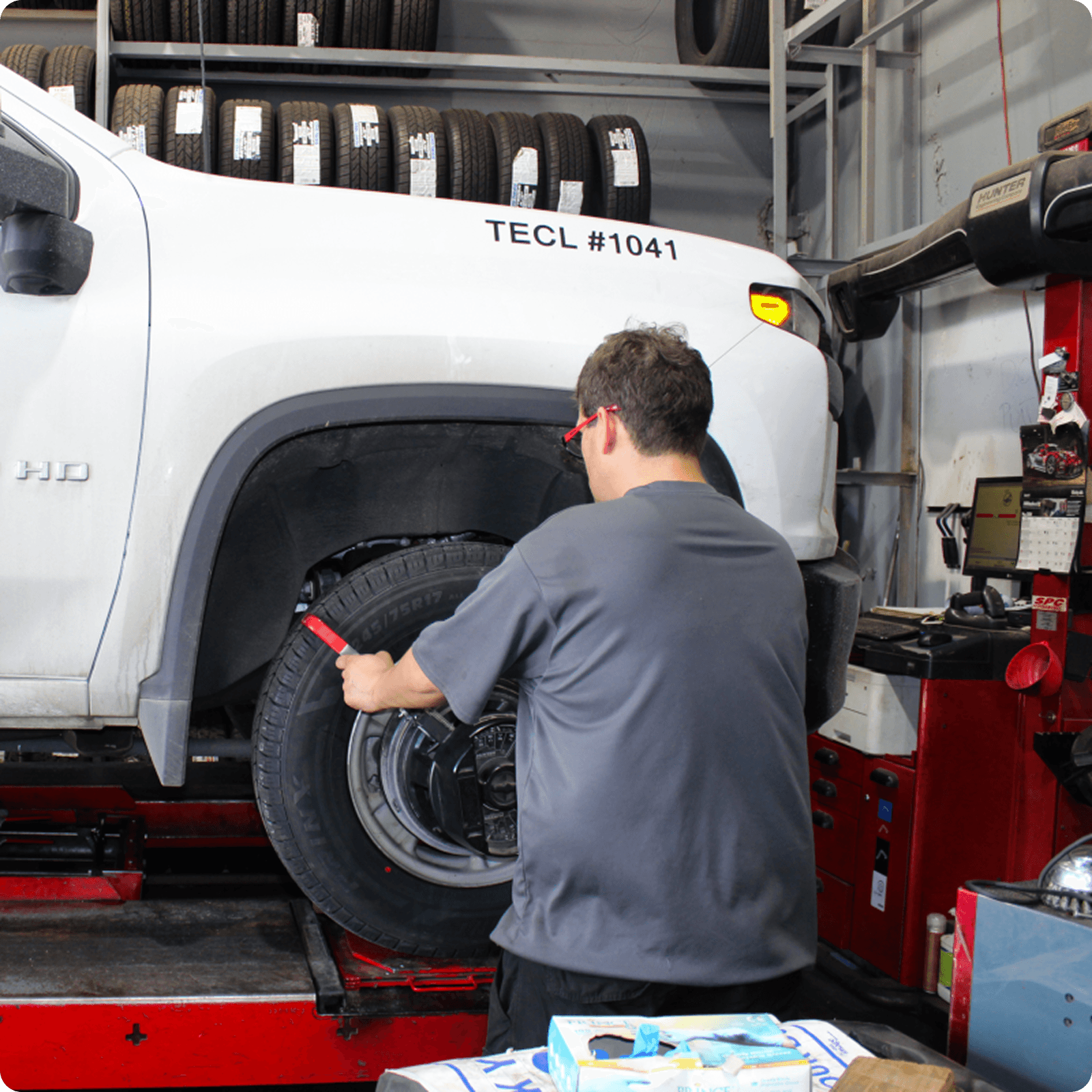
OUR SERVICES
Wheel Alignments
A wheel alignment consists of adjusting the wheels of your vehicle so that all wheels are parallel to each other and perpendicular to the ground. Three basic angles contribute to proper wheel alignment: camber, caster, and toe. Camber is the measure of the degree of perpendicular offset from the road surface. Caster is the angle of your wheel's pivot, which is attached to the suspension, and when this angle is out of alignment, straight-line tracking is affected. Toe refers to the angle of directional difference between the tire and the centerline of the vehicle. The front and rear wheels on your vehicle should always be perpendicular to the ground and parallel to the tire beside it. Routine wheel alignments have the potential to save you money in the long run while promoting optimal vehicle performance.
Benefits of Wheel Alignment
A wheel alignment ensures your vehicle runs safely and efficiently, reducing tire wear, improving gas mileage, and enhancing driving safety. Misaligned wheels lead to uneven tire wear, causing your vehicle to pull to one side while in motion. Neglecting wheel alignment can escalate into steering and suspension problems because misalignment not only strains your tires but also stresses suspension components. If your vehicle starts pulling to one side or your tires show uneven wear, address it promptly.
REASONS TO CHOOSE US
What We Can Do For You
We offer a full range of services to vehicle owners in Texas. We can help you with everything from an oil change to an engine change. We can handle any problem on both foreign and domestic vehicles.